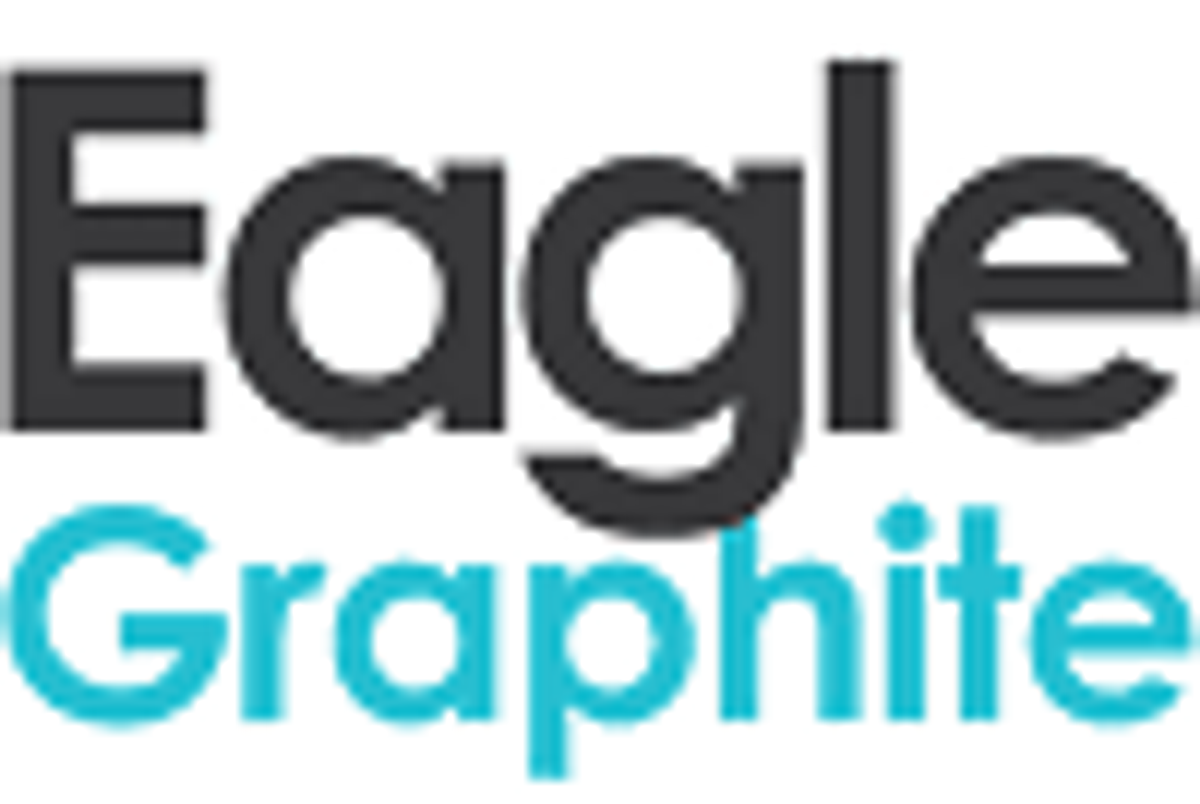Queen’s University and Eagle Graphite Report Significant Progress On Multi-Layer Graphene Project

Eagle Graphite Incorporated (TSXV:EGA) are pleased to report encouraging progress resulting from their joint multi-layer graphene research effort. The research was carried out under the NSERC Engage grant program as outlined in the Company’s press release of October, 2016.
Eagle Graphite Incorporated (TSXV:EGA) are pleased to report encouraging progress resulting from their joint multi-layer graphene research effort. The research was carried out under the NSERC Engage grant program as outlined in the Company’s press release of October, 2016.
Multi-Layer Graphene (“MLG”) is potentially useful when incorporated into polymer composites, with a consequent large improvement in strength, stiffness and heat resistance. This is important to the aerospace and automotive industries, where high performance composites are used to reduce weight and thus fuel consumption. For electric vehicles, a reduction in weight means longer range between charging points.
Dr. Aristides Docoslis, PhD, P.Eng. and Associate Professor of Chemical Engineering at Queens University in Kingston, Ontario, describes the progress made during the preliminary phase of the project. “We have developed a new environmentally-friendly, mechanical/chemical, aqueous-based process that exfoliates graphite to very fine, micron-sized multi-layer graphene (MLG) particles of controlled size distribution and aspect ratio. The yield of graphite exfoliation and MLG size distribution correlates well with key process parameters, which is promising from a process scalability point of view. The size and aspect ratio of the produced MLG makes it suitable for use in polymer-matrix based composite materials with fine-tuned properties.”
George Hawley of Supermin, who acted as a consultant to the project, adds “Our work at Queen’s University aims to develop a mechanical-chemical method for exfoliating Eagle’s graphite to produce MLG of an aspect ratio that is estimated to be in the correct range. Preliminary results indicate that this is achievable without using conventional exfoliation methods that rely on strong acids and explosive chemicals.”
“It is important to develop new methods such as this because there is presently no practical way to incorporate graphene’s extremely high strength and stiffness into advanced materials such as plastic composites reinforced with carbon fibre. Monolayer graphene is so thin that it rapidly increases the viscosity of any composites beyond the capability of today’s processing equipment. Current production equipment can handle only about 1% graphene, and such a tiny amount will not make enough of a difference to be worthwhile. Multi-Layer Graphene (“MLG”) on the other hand should provide the right balance between strength and workability.”
“We at Eagle are excited to be at the forefront developing a potentially high value product with enormous target markets,” says Jamie Deith, CEO of Eagle Graphite. “These early results are very encouraging, and we plan to continue this research for as long as it shows promise.”
About Queen’s University
Queen’s is one of Canada’s oldest degree-granting institutions and a full-spectrum, research-intensive university that conducts leading-edge research in a variety of areas. It balances excellence in undergraduate studies with well-established and innovative graduate programs. The department of Chemical Engineering at Queen’s is an award-winning department in both research and teaching, reflecting the dedication in the Department to achieve the highest standard of academic excellence. Its mission is to provide internationally recognized leadership in education and research at the interface of science and engineering, anticipate the needs of our students and society as a whole, and contribute to responsible solutions for future generations. The Department of Chemical Engineering is nationally recognized as one of the top research departments in Canada and internationally acknowledged as a leading department in North America.
About Supermin
Supermin Enterprises is the consulting company of George C Hawley. Mr. Hawley worked in the UK as a Research & Development Chemist for Morgan Crucible company, a leading global manufacturer of synthetic graphite products. Later, as Technical & Marketing Director at Martin Marietta Corporation in Quebec, he was responsible for the development of the Suzorite Mica business. Working closely with auto manufacturers Ford, General Motors, Chrysler and Volkswagen, and with plastics producers GE, DuPont, GAF, and Hercules, he pioneered the reinforcement of plastics using high aspect ratio mica flake, and brought this to a production capacity of 30,000 tonnes per year.
Since 2000, Mr. Hawley has been a consultant providing expert guidance to the industrial minerals industry, including graphite.
Click here to connect with Eagle Graphite Incorporated (TSXV:EGA) to receive an Investor Presentation.





